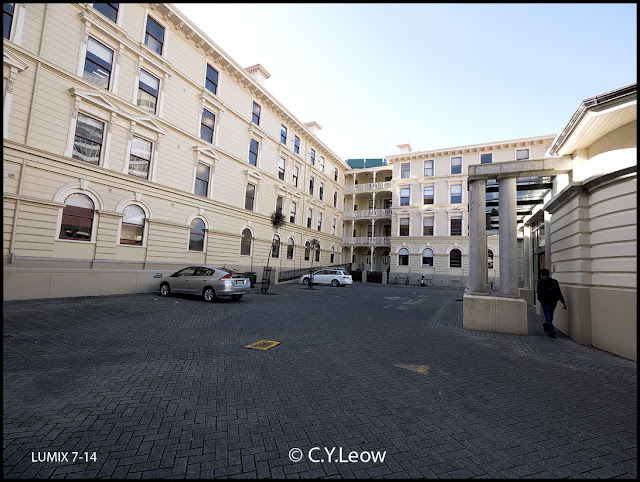Thanks to PANASONIC NEW ZEALAND, I had the pleasure of trying out this well built, weather-proof zoom!
The lens employs 15 elements in 10 groups, there are 3 Aspherical Lens, 2 ED Lens, 1 Aspherical ED Lens and 1 UHR Lens. Seven aperture blades are used for a nice bokeh, the closest focusing distance is 23cm and the lens is dust and splash-proof.
The closest comparable Panasonic ultra-wide zoom is the Panasonic LUMIX G VARIO 7-14 mm f4.0 ASPH, one of my favourite ultra-wide zoom and it is only natural that I compare it with this NZ$1,600 beauty.The 7-14 now cost NZ$1,290, I bought mine a few years ago.
The Leica with its detachable metal lens hood look much larger that the Lumix with the build-in hood. Due to its "brighter" f/2.8 aperture, the front of the 8-18 is much larger than the 7-14 which have a constant f/4 setting.
Mounted on my GX85, (top photo) the balancing was slightly front heavy, you will be able to use this rather large zoom on the tiny Lumix GM1, but the combination is so front heavy that you will have problem holding it steady in slower speed, especially the little GM1 do not have stabilizer like the larger GX85.
I feel that the best camera for this Leica zoom is the bigger and heavier Lumix G85. If you can afford it, the top end GH5 will be a perfect match.
Against the 1mm wider Lumix, how much the Leica actually loose out on the wide end? I took some shots with the two ultra-wide on my deck to find out.
I am happy to say, not a lot! The Leica is also able to let in more light at f/2.8!
I took the 8-18 to my fav "testing ground" and shot the three pictures above.
I was amazed how well the Leica render those strong back lit scene, there were no flare or glare, the colour contrast were exemplary, may be all those exotic glass in the lens tube are doing their job! Would you pay $1,600 for it?
If you trying to be a little silly and really point this lens at the sun, you DO get some flare and glare, but that is really pushing it!
What about buildings, straight lines? Take a look below..
I try to look for traces of Barrel Distortion, most ultra-wide lens have them, the distortion bow and distort straight lines... I cannot find any.
I then suspect the images must have their optical distortions corrected when you open them with Photoshop or Lightroom, believe you me, camera manufacturers do that!
Ah! Not if you open the RAW image in PREVIEW, if there are any, preview (a Mac software) will show all the lens distortions in their glory, well, I did that, still NO BARREL!
I was impressed! Very!
More pictures of buildings and architectures...
Below are two pictures I took at our open market to show the colour rendering ability of this beautiful zoom.
What about pictures of people and group?
No problem! But oops! The last picture was shot with the GM1 and its tiny 12-32 kit lens! :)
I still have my 30 year old NIKON POLARISER with me, in mint condition, I attach it to the Leica and took these shots below, with and without the filter.
The difference in colour is hard to see, the one taken with the polariser is a little bit more saturated. I was expecting MORE saturation, but the small differences could also mean the optics are so highly corrected that you do not really need the help of a polarising filter?
Am I making any sense?
Famous Last Words...
Would I buy this NZ$1,698.00 Leica beauty?
No, because I still got my Lumix 7-14 which is slightly wider and smaller.
But then, if I was looking for a top quality ultra-wide zoom which is weather proof, sharp, distortion free and able to take filters; the Leica 8-18 is unbeatable! Also not forgetting you can get f/2.8 at 8mm when you need it!

































Post a Comment